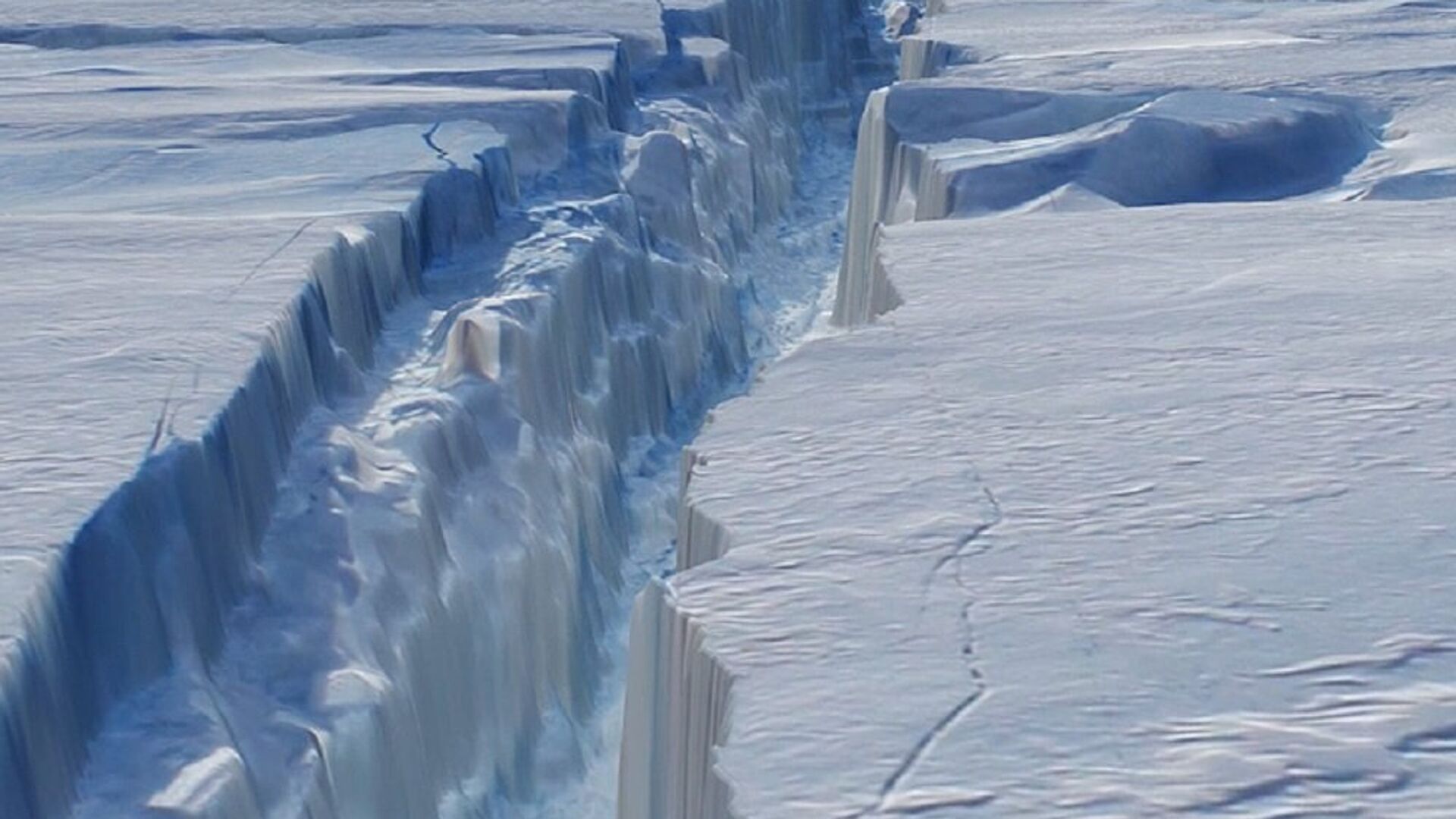Antarctic Ice Shelf Holding 'Doomsday Glacier' Could Shatter in the Next Ten Years, Scientists Say
16:28 GMT 14.12.2021 (Updated: 16:29 GMT 14.12.2021)

CC0 / /
Subscribe
Scientists estimate that the Thwaites Glacier is currently responsible for 4 percent of the global annual rise in sea level. Researchers say hotter ocean temperatures, which are fuelled by climate change, are responsible for the erosion of the shelf.
An Antarctic ice shelf containing the Thwaites Glacier could shatter within the next five to ten years, an international group of scientists has warned. Nicknamed the "Doomsday Glacier" for its humongous size, (roughly the size of the United Kingdom or US state of Florida) the researchers say it will likely live up to its name as it is melting more rapidly than was previously estimated.
The scientists conducted a study using an uncrewed submarine travelled beneath Thwaites for the first time and took measurements. The information collected by the watercraft has revealed that more warm water from the deep ocean was reaching the glacier, triggering fractures in the Thwaites and the ice shelf.
The scientists conducted a study using an uncrewed submarine travelled beneath Thwaites for the first time and took measurements. The information collected by the watercraft has revealed that more warm water from the deep ocean was reaching the glacier, triggering fractures in the Thwaites and the ice shelf.
"I visualise it somewhat similar to that car window where you have a few cracks that are slowly propagating, and then suddenly you go over a bump in your car and the whole thing just starts to shatter in every direction", explained Dr Erin Pettit from Oregon State University.
Scientists say the situation is exacerbated by the huge cavities under the glacier, which allow water to erode it. Since Thwaites sits on the surface, most of which is below sea level, researchers say the glacier is particularly vulnerable to melting.
Researchers say that if the shelf shatters it will have the potential to increase global sea level by 25 percent. Previous studies have shown that a collapse of the glacier alone into the ocean would result in global sea levels rising by about 65 centimetres. The potential collapse will have a knock-on effect on other glaciers in the area, scientists say.
Researchers say that if the shelf shatters it will have the potential to increase global sea level by 25 percent. Previous studies have shown that a collapse of the glacier alone into the ocean would result in global sea levels rising by about 65 centimetres. The potential collapse will have a knock-on effect on other glaciers in the area, scientists say.
Ella Gilbert, a research scientist at the University of Reading, said an urgent response from the international community is needed to stop climate change, which is fuelling hot ocean temperatures.
"The polar regions are the canary in the coalmine – they are the symbol of climate change. We really do need to minimise our emissions because if we lose the polar regions, not only are we going to amplify climate change … it will contribute to sea level rise which affects everyone around the globe".
Researchers from the International Thwaites Glacier Collaboration are now preparing to send a yellow submarine called "Boaty McBoatface", which will dive under the glacier's floating ice and gather all factors influencing the melting of Thwaites.


